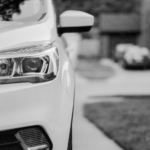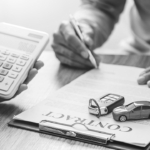Driving is a fact of life for most people in the U.S. Having a car can make life a lot easier and saves a lot of time and headaches. For many people driving is a lot of fun, whether down the street to the grocery store or across the country on a road trip.
Unfortunately, the true cost of car ownership can sneak up on drivers. The expenses of owning a car go far beyond the original price on the car window, and if drivers aren’t careful, they can fall into an expensive trap that is hard to get out of.
The cost of car ownership is now higher than ever before. But wallet-savvy drivers can take real steps to lower their costs. Here are a few ways any owner can reduce the cost of owning a car.
An Eye for Efficiency
Whether considering buying a new or a used car, the fuel economy of the car is key. Fuel efficiency should always be a factor for the cost-conscious consumer. Oftentimes, luxury or large vehicles have very poor fuel economy, which translates to a direct hit to the wallet at the fuel pump.
Choosing a smaller or more fuel-efficient car can save hundreds of dollars a year — significant savings. Some drivers go the extra step and choose a hybrid or electric vehicle. While the upfront sticker cost of these vehicles is often higher, drivers can end up saving in the long run in many cases. Running a few calculations with gas prices in mind can give drivers a better idea before they commit to a purchase.
Be Prepared for Repairs
Big, expensive car repairs always seem to happen at the worst time. If the driver doesn’t have some savings, a serious repair can be devastating. Some prefer the peace of mind an extended car warranty gives. After manufacturer warranties expire, an extended car warranty can cover those sudden, expensive repairs without wiping out the bank account.
Besides having a plan for repairs, drivers will want to perform regular maintenance. Cars that get regular maintenance are far less likely to need big, expensive repairs later on. Drivers should keep in mind that larger vehicles and luxury vehicles are much more expensive to maintain and repair. They may require specialized servicing and special-order parts — both meaning big hits to the wallet.
Take a Load Off
A lot of things affect the fuel economy of a car, including the amount of weight in the car. When a car is hauling around extra weight, it uses more gas. Drivers should consider unloading any unnecessary equipment from their cars. Tidying up the inside of the car not only feels better, but it’ll save money.
Car top carriers and racks can also lower fuel economy. They disrupt the flow of air around the car. This makes cars less efficient at speed, and it’s also driving extra weight around. If the driver only needs the rack once in a while, it is better to only install it for those occasional uses.
The Right Coverage
Everyone needs car insurance, but not all policies are the same. The single most important thing a driver can do to get the best car insurance price is to compare quotes. It is never good to assume that one company is the best price without checking first. Each car insurance company offers different types of driving programs and discounts. Companies also calculate insurance premium costs in different ways.
Drivers also need to consider the type of coverage that is best for them. It can be tempting to only buy the minimum required by the state, but in many places, the minimum car insurance will not cover the cost of the damage to the car. New cars and luxury cars not only require more insurance but there may be extra fees if insurance companies consider them to be a high-theft or repair risk.
On the flip side, it’s possible to be paying for too much insurance, especially if the car is older. Cars continue to lose value as they age, so it might not be worth paying for comprehensive car insurance in that case. Owners could instead set the savings aside in a rainy-day fund.
Think About Tires
The importance of the right set of tires is often overlooked. It is tempting for some drivers to choose very inexpensive tires to save money. Other people choose tires that have a certain look. Both decisions can cost in terms of fuel efficiency. Radial, steel-belted tires are best for most drivers. People who often drive in rainy weather should get tires designed for safety in wet conditions. Larger tires for dirt roads and off-roading may look fun but can reduce the fuel efficiency of the car or truck by a lot.
Purchasing very cheap tires can also backfire. Manufacturers rate tires by how much mileage a driver can get before needing to replace them. Weather conditions vary throughout the country. The most inexpensive tires are not usually made to handle wet or snowy conditions. Drivers should think about where they drive the most and investing in a set of tires suited to those driving conditions. Some drivers have several sets of tires and change them as conditions change.
Good tire maintenance is key regardless of the kind of tire a driver uses. For best fuel efficiency, drivers should keep tires inflated and rotated on a regular basis. Under-inflated and unevenly worn tires cause a measurable decrease in fuel economy. A simple tire gauge can help drivers maintain the correct pressure. This will lead to fewer trips to the gas station.
Money Matters
Expenses related to car ownership are inevitable. With some responsible choices and a little planning, car owners can avoid unnecessary expenses. Whether well-off or on a strict budget, no car owner wants to feel like they’ve wasted their hard-earned money on something avoidable.
With car ownership at an all-time high, it can seem like paying extra is just the way things are. The truth is that there are real and easy steps every driver can take to save cash. Drivers can try these steps whether they’re hanging on to their existing car or in the market for something new.





